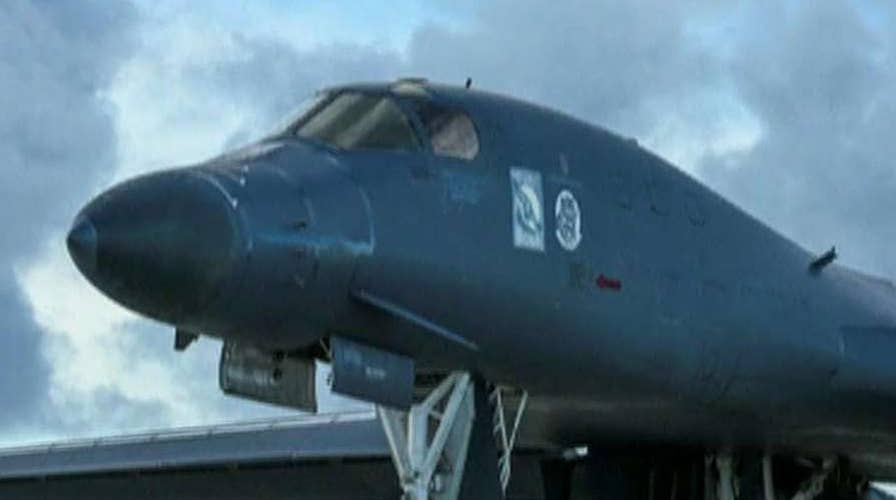US bombers join massive military drill in South Korea
Kitty Logan reports on international news from London, England.
The U.S. Seventh Air Force flew a B-1B supersonic bomber over South Korea on Wednesday as a part of a joint aerial exercise with the South’s military, South Korean officials confirmed.
South Korea’s Joint Chiefs of Staff said in a statement that the U.S. bomber simulated land strikes on military grounds near the eastern coast, proving its ability to “punish” the North’s aggression.
“Through the drill, the South Korean and U.S. air forces displayed the allies’ strong intent and ability to punish North Korea when threatened by nuclear weapons and missiles,” the JCS said.
The drill involving the B-1B Lancer bomber was part of a five-day joint training exercise called “Vigilant Act,” Reuters reported.
The Seventh Air force has sent other strategic military assets, including six F-22 and 18 F-35 stealth fighter jets. About 12,000 U.S. military personnel are participating in the drill, which started Monday.
The participating aircrafts will be flying at eight U.S. and South Korean military installations throughout the South.
The drills come just a week after North Korea launched its most powerful missile yet, an intercontinental ballistic missile with the capability to reach the U.S. mainland.
The Seventh Air Force released a statement saying that the drills were not scheduled in response to the recent test-launch.
North Korea warned that the drills would push matters to “the brink of nuclear war,” Reuters reported.
UN official in Pyongyang
Amid the heightened tensions, United Nations undersecretary general for political affairs, Jeffery Feltman, has made a rare visit to North Korea.
Arriving Tuesday, Feltman was set to meet North Korea’s foreign minister and vice president during his three-day visit, the Wall Street Journal reported.
The last time a top U.N. official visited Pyongyang was in 2010.
“The visit is the response to a longstanding invitation from Pyongyang for a policy dialogue with the U.N.,” the Journal cited Stephane Dujarric, spokeswoman for the U.N.’s secretary-general, as saying.
The visit could be an attempt to try to deescalate tensions in the region -- although the U.N. Security Council has yet to formally respond to last week’s missile test.
The Associated Press contributed to this report.

